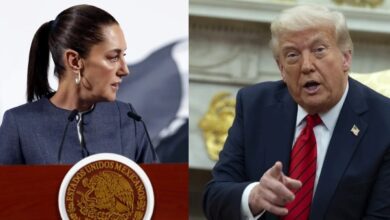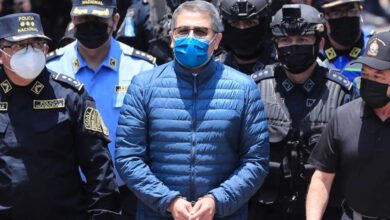The Hidden Truths in Honduras Prison Riot
In Honduras, a prison riot's chilling aftermath unveils police bullets in victims' bodies, sparking allegations of law enforcement's dark collusion with criminal gangs.

Photo: TW-fredypavon
The Latin American Post Staff
Escucha este artículo
Leer en español: Las verdades ocultas en los disturbios carcelarios de Honduras
Unveiling Darkness: A Shocking Revelation
the shadow of Tegucigalpa's outskirts, a horrific discovery within the confines of a women's prison stirs profound questions about law enforcement integrity in Honduras. In June, a violent riot erupted in this prison, leading to the tragic death of 46 inmates. But the aftermath unearthed something more sinister: police bullets lodged in the bodies of some victims. This revelation, brought to light by Honduran Deputy Security Minister Julissa Villanueva, suggests a possible entanglement of police forces with notorious criminal gangs.
The riot, characterized by brutal violence, was a battleground for two infamous gangs: Barrio 18 and MS-13. In this chaotic milieu, members of Barrio 18 are suspected of using police ammunition against their rivals. Villanueva revealed that 15 police bullets were discovered in the bodies of MS-13 members, who were not just shot but also burned during this savage attack.
This information, divulged in a television interview and shared on Villanueva's Facebook page, paints a grim picture. "Scientific evidence is telling us that 96% of the rounds found… belong to the police," she said, hinting at a disturbing possibility of police collusion in one of the worst security breaches in Honduran history. These findings raise uncomfortable questions about the integrity of those sworn to protect and serve.
Unanswered Allegations
The national police, confronted with these allegations, have remained silent, offering no comment on the official's accusations. Villanueva's investigation, however, did not specify the exact number of bodies containing police bullets or the number of individual guns, whether linked to the police or not, found at the scene.
The implications of these findings are profound and troubling. "What does that mean? That there must have been a conspiracy at one point. With whom? With those who were there at the time, guarding those police posts. And that they gave weapons to some and not to others," Villanueva pondered, suggesting a potential orchestration involving police complicity.
In a contrasting statement, the Security Ministry claimed that of the 19 guns found at the riot site, only one had previously been part of police property. This claim further complicates the narrative, introducing ambiguity into a complex situation. The Ministry also revealed that various "police" weapons, ammunition, and vehicles ordered by the previous administration had never been added to the official inventory, hinting at systemic issues within the law enforcement apparatus.
This incident not only sheds light on the deadly dynamics of gang rivalry within Honduran prisons but also casts a shadow over the integrity of the country's police force. The possibility that police weapons and ammunition could end up in the hands of criminal gangs is a chilling thought, raising fears of deep-rooted corruption and collusion.
Unraveling the Truth
As the investigation continues, the Honduran government faces the daunting task of unraveling the truth behind this tragic event. The revelations have shaken public confidence in the police and highlighted the urgent need for reform and accountability within law enforcement agencies.
Also read: Mexico's Women in Crisis Behind Bars: Rising Suicides Spotlight Systemic Fail
The prison riot in Honduras, thus, stands as a stark reminder of the intricate and often dangerous interplay between criminal elements and state actors. It underscores the complexities of combating organized crime in a region of violence and corruption. As Honduras grapples with these revelations, the world watches, hoping for justice and a future where the rule of law prevails over the law of the jungle.





